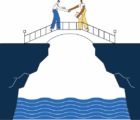China Re issued China’s first catastrophe bond on the international capital market on July 1, 2015. China Re P&C, a wholly owned subsidiary of China Re, issued the $50 million catastrophe bond, which covers risks incurred from earthquakes in China, through Panda Re, a Bermuda-based special purpose vehicle. Part of the earthquake insurance underwritten by China Re and its subsidiary was ceded to Panda Re, which then sought financing for the coverage on the bond market.
Catastrophe Bonds: Background
A catastrophe bond is a form of insurance-linked security (ILS) that falls in the category of alternative risk transfer. In contrast with traditional catastrophe reinsurance, the issuance of an ILS is arranged through capital markets rather than insurance markets. An ILS essentially transfers the insurance risk accepted from the insurance market to capital markets, aiming to relieve the underwriting capacity pressure in the insurance market.
The first catastrophe bond was issued in the U.S. in the 1990s. Since then, the catastrophe bond market has shown strong growth momentum. In 2014 the international market had record issuances of around $9.5 billion of catastrophe bonds, while hitting a record $22.5 billion of outstanding catastrophe bonds. Thus the catastrophe bond has become an important tool for catastrophe risk transfer.
Price Comparison between Catastrophe Bonds and Traditional Catastrophe Reinsurance
As a catastrophe bond is a special form of security, its pricing methodology is much different from that of traditional catastrophe reinsurance. Furthermore, it is not a simple job to compare the price of a catastrophe bond with that of a catastrophe reinsurance treaty directly, although comparisons are often made between the coupon rate and the rate-on-line (ROL). Here we will use a simplified example to explain the difference between catastrophe bond pricing and catastrophe reinsurance pricing.
For the purpose of illustration, we will assume that the coverage period of earthquake risk is one year and the coverage amount is $1 billion, assumed to be one unit. This means that the coverage amount of one unit is the face value of the catastrophe bond as well as the limit of the catastrophe reinsurance treaty. We will also assume that the probability of an earthquake occurrence in a single year is q, and correspondingly that p = 1 – q is the probability that no earthquake occurs in a single year.
Since the probability of earthquake occurrence is very low, but the severity of earthquake losses is extremely high, it is additionally assumed that the face value of the catastrophe bond and the limit of the catastrophe reinsurance treaty will both be exhausted once an earthquake occurs.
(i) Price comparison without considering the time value of money
In order to make a comparison between the price of the catastrophe bond and that of the catastrophe reinsurance treaty, we will perform an evaluation that does not take into account the time value of money.
As the face value of the catastrophe bond and the limit of the catastrophe reinsurance treaty are both one unit, the coupon rate (C) of the catastrophe bond and the ROL of the catastrophe reinsurance treaty can be easily determined.
For the traditional catastrophe reinsurance treaty, according to insurance pricing principles, ROL is the expected value of future catastrophe losses. That is, ROL=1×q=q.
For the catastrophe bond, according to bond pricing principles, we must have that 1=(1+C)×p+0×q. That is, C=q/p.
Since p is less than 1, it can be seen that C=q/p>q=ROL. For the same catastrophe coverage, the coupon rate of a catastrophe bond is higher than the ROL of a traditional catastrophe reinsurance treaty.
(ii) Price comparison considering the time value of money
Now we will consider the situation where the time value of money is introduced.
For the traditional catastrophe reinsurance treaty, ROL becomes the present value of the expected future catastrophe losses. That is, ROL=1×q×v, where v=1/(1+i) is the discount rate. Hence, we can express the bond face value as 1 =ROL/(q×v).
For the catastrophe bond, in accordance with bond pricing principles, the net present value of all the future cash flows at time 0 should equal zero, so we should have 1-(1+C)×p×v=0. Here, we bring the above expression of the bond face value 1=ROL⁄(q×v) into the formula and get the relationship C=ROL×(1+i/q)×(1+i)/p.
Since (1+i/q) and (1+i)/p are both larger than 1, it can be seen that C>ROL. Therefore, after taking into account the time value of money, we can also reach the conclusion that for the same catastrophe coverage, the coupon rate of a catastrophe bond is higher than the ROL of a traditional catastrophe reinsurance treaty.
The examples above are specific to a one-year coverage period. Extending the coverage period to n years, the general pricing formula of a catastrophe bond is shown below, which allows the coupon rate to be solved:

In the formula above, A stands for the face value and C stands for the coupon of the catastrophe bond. The item pt represents the survival probability of the catastrophe bond, which means that no catastrophe event occurs before time t. This catastrophe bond will work as a normal bond in the absence of a catastrophe, but it will end when any catastrophe occurs.
To summarize, some people would like to compare the cost of a catastrophe bond with that of a traditional catastrophe reinsurance treaty, directly using the coupon rate and the ROL. However, one can conclude that we might be comparing an apple with a pear. It is not an easy job to draw a comparison between the two instruments, but an understanding of the difference in their fundamental pricing principles proves valuable.
Xiaoxuan (Sherwin) Li, FCAS, FIA, FCAA, CCRA, is the head of the actuarial department for China Re P&C in Beijing, and he has served as a member of the CAS Education Policy Committee. Xiaoying Chang, ACAA, is an actuarial analyst for China Re P&C in Beijing.













